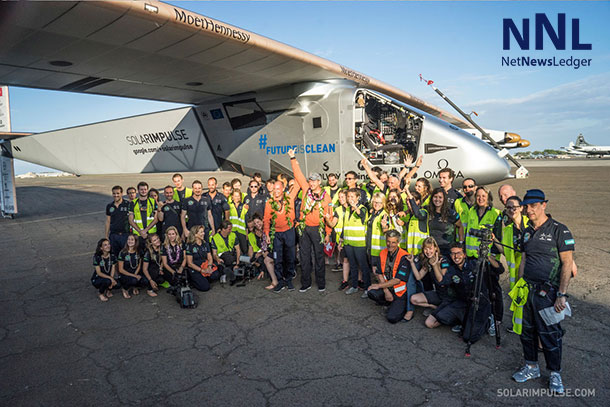
Solar-powered plane takes off for first-ever Pacific crossing to Hawaii
A solar-powered airplane attempting to fly around the world took off from Nagoya, Japan en route to Hawaii before dawn on Monday local time after spending an unscheduled four-week stopover due to bad weather in Japan. The 5-day flight to Hawaii will be the eighth and longest of the pioneering plane’s 35,000-kilometer journey.
NAGOYA, Japan – The Solar Impulse 2 airplane on a round-the-world flight lifted off from the tarmac at Nagoya-Komaki airport in Japan at 03:03 a.m. local time (18:03 UTC) on the longest and most challenging leg of the journey — a 115-hour non-stop flight across the Pacific Ocean to Hawaii. Never before has an airplane powered only by renewable energy flown across the world’s largest ocean. After six flights over land so far and one 44-hour flight over the sea, the Pacific crossing is now the greatest test for both man and machine on the Solar Impulse 2’s record-breaking flight around the world.
The solo flight by Swiss aviator Andre Borschberg began in Nagoya (Japan) without any complications as the Solar Impulse 2 plane took off in the early morning hours from the Nagoya-Komaki airport, west of Tokyo. Borschberg will attempt to stay awake for most of the next 5-6 days while taking only short 20-minute catnaps several times each day when possible.
“This is our moment of truth, where everything should come together, the vision and the technology,” said Borschberg over his radio to mission control in Monaco as he lifted off the runway into the darkness. The experienced Swiss pilot and explorer will face an extraordinary challenge in staying awake and alert for most of the next five to six straight days and nights on the trans-Pacific flight into the history books. Borschberg has taken turns flying the single-seat plane with his Solar Impulse 2, project initiator and partner Bertrand Piccard who will then fly from Hawaii to Phoenix, Arizona.
The Solar Impulse 2 was forced to land in Japan on June 1 while attempting to fly from Nanjing, China to Hawaii due to deteriorating weather conditions further east across the Pacific. The 40-hour non-stop flight was nevertheless the longest flight ever made by a solar-powered airplane. The plane, which weighs as much as a family car despite having a wingspan as large as a 747, does not need a drop of fossil fuel to fly at speeds of 50 to 100 km/h. The round-the-world flight is designed to promote renewable energy and demonstrate the tremendous potential of solar power.
The flight began in Abu Dhabi in March and is on track to return to Abu Dhabi after 25 total days of flight on 13 legs.
